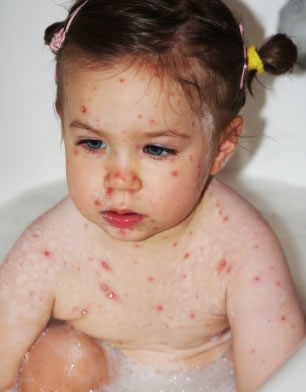|

CHILDREN AND PETS

Studies show that pets can be valuable in the life of a developing child. Children with pets tend to be more compassionate, self-confident and responsible, and are greater achievers. Before deciding on a pet, you need to weigh the practical pros and cons of keeping a pet. It is a huge responsibility and depending on the age of your child, you may have to assume most of that responsibility.
Once you’ve made the decision to keep a pet, you need to decide what type of pet to keep. Some pets take up more time than others and some will be more appropriate for your child’s age group than others. Also do some research on how much time and care different animals require. With all this information at hand, you will be able to make an informed decision about what type of pet to get. Of course, your child may have a specific animal in mind already. But if his choice will not be suitable for you, then you need to be truthful with him and explain this to him and perhaps offer an alternative.
Birds and fish are ideal for little children. Because they are always moving, they help children to develop visual skills. From the age of four, children can be taught how to handle a pet under adult supervision. Guinea pigs are great for pre-schoolers. They like to be held, seldom bite and whistle when excited or happy. Like guinea pigs, kittens also bond strongly with children. From the age of six, your child should be strong enough to control an energetic puppy. Rabbits are more suitable for older children as females can be aggressive. Preferably get a male rabbit and have him sterilised. Alternative pets such as lizards, frogs and snakes are becoming more popular. Ensure you have taken safety considerations into account.
Some safety considerations
• Ensure that you have the time, space and energy to look after a pet.
• Babies are not able to interact meaningfully with pets. Toddlers may pull tails, eat pet food or put their hands in fish tanks and cages. Supervise pets and children closely, especially when they interact with each other.
• Keep pet food and litter out of your child’s reach.
• Ensure that children wash their hands after animal interactions and before they eat.
• Be aware of allergies. Many children are allergic to cats.
• Small children often drown in fishponds. Install wire mesh over your fishpond.
• If you already have a pet, a new baby can be a threat to it. Get your pet accustomed to the new baby gradually.
• Most children who sustain dog bites are bitten by their own dog or another familiar dog. Animal behaviour is unpredictable. Always supervise children near dogs and other animals.
COMMON CHILDHOOD ILLNESS

Most parents know instinctively when there is something wrong with their child. The child may be listless, refuse to eat or be more clingy than normal. Caring for a sick child can be one of the most stressful experiences the parent of a young child can go through, however most of us have to go through it at some point or the other. Depending on the symptoms and their severity, you may or may not need to see a doctor.
Here are 10 common childhood illnesses.
1. Colic - refers to a crying spell in babies, usually in the evenings, during which the baby’s face becomes very red and the legs are drawn up to the stomach as if in great pain. It can last from one to three hours and can be very stressful for caregivers.
2. Common cold – is caused by a virus. It lowers the body’s resistance and can cause further complications such as bronchitis. A blocked nose in a baby can cause feeding problems.
3. Influenza –is also caused by a virus and can result in secondary infections.
4. Constipation – Possible symptoms are hard stools, blood in the nappy or underpants and lower abdomen pain.
5. Diarrhoea – is usually a symptom of another illness and can cause dehydration.
6. Cradle cap is a crusty, yellowish, skin condition that occurs mainly in babies. It is harmless unless accompanied by red, scaly areas elsewhere on your child’s body.
7. Chickenpox – is contagious. Possible symptoms include small blisters all over the body, intense itchiness and headache or fever. An optional vaccination is available.
8. Measles – is very contagious. Possible symptoms include a brownish-red rash, red sore eyes, high fever, and a runny nose. It can be vaccinated against.
9. Earache – The most common cause of earache is middle ear infection. It could also be a symptom of other illnesses.
10. Tonsillitis – refers to infection of the tonsils, which protect the body, by trapping and killing bacteria and preventing them from entering the respiratory tract. It is not serious unless it is repeatedly accompanied by infection of the middle ear, which could cause hearing problems.
According to Dr Miriam Stoppard, the UK child expert, the following symptoms warrant immediate medical assistance.
• Temperatures of over 39 â�°C or below 35â�°C or a temperature of more than 38â�°C for more than 3 days.
• Convulsions
• Vomiting or diarrhoea for more than 6 hours and/or accompanied by abdomen pain and/or fever
• Blood in stools
• Dizziness, nausea and headaches
• Blurred vision
• Laboured breathing
• Sudden loss of appetite/refusal of all food for a day, for a child with a normally healthy appetite
PRODUCTS


|


























































